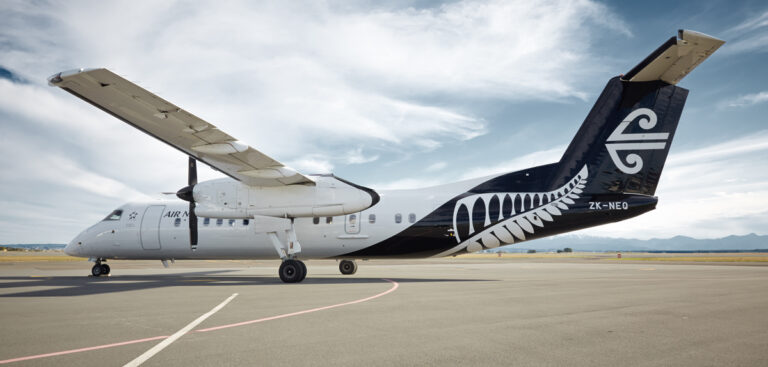Air New Zealand will fit its Bombardier Q300s with next-generation satellite receivers to collect environmental data during domestic flights.
Using GPS signals reflected from the earth’s surface the GPS receiver unit will act as a black box during flights, gathering data to better predict severe storms, and carry out climate change research.
Captain David Morgan, chief operational integrity and standards officer for Air New Zealand, said, “Our Q300s cruise at 16,000ft – much closer to the land and sea than NASA’s satellites. Placing receivers on aircraft will enhance the resolution and quality of information, giving scientists an unprecedented view over our entire network, from Kerikeri to Invercargill.”
Data will feed into NASA’s Cyclone Global Navigation Satellite System (CYGNSS), with program scientist Dr Gail Skofronick-Jackson saying there is an opportunity to extend the mission and monitor the environmental signs of climate change.
“CYGNSS uses GPS signals, bounced off the ocean, to measure windspeeds and help scientists better predict cyclones and hurricanes. Over land, the technology can determine soil moisture levels, so it can also monitor climate change indicators such as drought, flooding and coastline erosion,’ Skofronick-Jackson said.
The project was made possible through an agreement between NASA and the New Zealand Ministry of Business, Innovation and Employment (MBIE).
Dr Peter Crabtree, general manager of science, innovation and international at MBIE, said, “Through this partnership, Air New Zealand’s world-class engineers, and researchers across New Zealand, will have the opportunity to work with NASA on a mission that will advance global understanding of the impacts of climate change.”
The University of Auckland will establish a Science Payload Operations Centre to receive and process data collected in flight.
Professor Delwyn Moller, project lead, said, “Local scientists will work with the NASA CYGNSS team to process these unique measurements into environmental data, opening up a range of research opportunities and potential uses, from flood risk management to agriculture and resource planning.”
The receivers are being developed by the University of Michigan for NASA’s Earth Science Technology Office.
Air New Zealand will fit the first Q300 in late 2020 and if the approach is successful, the airline will look at adding more across the fleet.



